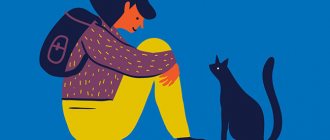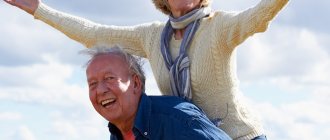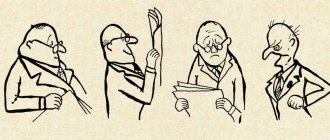Who is a normosthenic?
Normosthenic is one of the body types and character typologies proposed by Kretschmer.
Of all other body types, the normosthenic type is the evolutionarily best type for survival in physical reality. These are, as a rule, strong, resilient people with an athletic build. Their innate strength is not only somatic, they are quite mentally stable, have a social orientation, are extroverted, can show persistence in their chosen task and leadership qualities, and do this without much effort, representing natural qualities. It is quite easy to recognize a normostenric person even in a passer-by - they are dexterous and athletically built. They are tall, proportionally built and full of physical strength. Normosthenics rarely go unnoticed because they do not have anxiety or low self-esteem. Their gait is fast and energetic, their posture is always perfect, their facial expression is clear and clear, and their voice is loud and confident. In principle, confidence shines through in their every gesture, but observing the need to behave quietly and inconspicuously, speak calmly, and not attract unnecessary attention to yourself will be quite difficult.
Such a developed physical part of a person makes him capable of performing almost any physical work or withstanding prolonged stress. These are those who love to go to the gym at the end of the work week, getting real pleasure from working on their body. The hidden need for movement forces them to choose active types of recreation, preferring walking instead of the subway or rock climbing instead of sunbathing by the pool. The increased need for activity also has another side - the need to constantly replenish energy reserves, so the metabolism of a normosthenic person is somewhat accelerated, and if, contrary to his nature, he sits all day, he will soon face obesity. In such a situation, a normosthenic person can lose weight by either reviewing their lifestyle and introducing more physical activity, or following a strict diet.
Since a person cannot change his appetite, he must regulate his food intake and exercise. A normosthenic person who does not comply with these parameters risks not only saying goodbye to a fairly slim and beautiful figure, but also getting health problems. The weak points of a normosthenic are the heart, blood vessels and skin, the organ that removes toxins from the body. Recommendations for nutritional balance include minimizing carbohydrates and eating more protein foods. The ideal is to eat three healthy meals a day, with snacks consisting of only fruits or vegetables.
In terms of training, a normosthenic must combine all types of training so that the body, designed for athletic and strength performance, feels development and pleasure from movement. If training on simulators seems boring, an alternative could be scuba diving, kayaking, hiking, piloting a motorcycle - all active recreation options, as well as options with a higher level of extremeness, are quite possible. The normosthenic type is adapted to successfully cope with such overloads that are inaccessible to the asthenic type.
Normosthenic is a special type of human character and physique.
Content
- 1 Differences between racology and racial studies
- 2 Body types and figures 2.1 Body types 2.1.1 Asthenic (ectomorph)
- 2.1.2 Normosthenic (mesomorph)
- 2.1.3 Hypersthenic (endomorph)
- 2.2.1 Female types
- 4.1 Russia 4.1.1 Russians 4.1.1.1 Eastern Nordic
The nature of this personality type
The characteristics of a person depend on his somatic condition and the type of organization of the body. The sensitivity and mobility of the nervous system, the ability to transform stressful experiences through the body's reaction, the influence of hormonal levels - all this physically determines the temperamental and personal characteristics of normosthenics.
Thus, for the character of a normosthenic person, great importance is usually attached to the emotional sphere, which will be the leading motive or an important companion of any activity. The love of physical activity and the ability to express on a physical level allow negative emotions to circulate freely, so such people may appear overly aggressive, although they simply do not suppress negative or protest feelings. But sometimes emotional capture plays against normosthenics, increasing the risk of a hypertensive crisis or heart attack. Accustomed to unleashing an aggressive whirlwind without stopping, a normosthenic runs the risk of rendering his own nervous system unusable, and without much help from others. The strength of somatic and psychological parameters in most cases causes people to give up or simply leave.
They also have an innate appetite for risk, which is a consequence of their confidence in their own physical strength. Note that the more physically helpless a person is, the less he will take risks in other matters, while a stable position at least in the body gives more confidence. Such self-confidence sometimes borders on the desire to solve many problems by dominating or showing strength. This is usually typical for normosthenics whose level of intelligence is at an average level, or who had deficiencies in socialization. At a high level of development, this tendency to take risks is transformed into excellent qualities of managers and organizers, those who are able to change the current state of affairs and bring not only their lives, but also the lives of other people to a new level. The ability to take risks, accompanied by a high level of responsibility for every decision, makes a normosthenic a leader, even if he does not document his position.
These people love to be the center of attention. In attractive versions, this is achieved thanks to their charm, sense of humor, oratorical and leadership qualities; in negative versions, their desire for attention can lead to loud talking and sarcastic remarks. They love speaking in public or being among crowds. An unfamiliar audience does not frighten, but on the contrary, stimulates normosthenics, giving them a surge of energy and interest, new ideas and concepts.
The desire to compete is present everywhere, from the choice of sport to the approach to work.
This means that a normosthenic is more interested in the moment of victory in competition than in achieving a specific goal. Sometimes only the presence of competitors can make them get up and get what they have long wanted, and if no one else shows enthusiasm in this direction, the normosthenic will move on to other things for now. The goal for them should always be clear, the task should be clear - this involves meticulousness and spontaneity of action. These are the people who save a burning project, a failed performance, or solve insoluble problems.
In terms of communication, normosthenics are nice, open people who easily win the sympathy of others and have a wide circle of friends. However, they do not go deep into relationships, they often lack empathy for other people, and are rather cold towards both the joys and misfortunes of even those close to them. The combination of this communication style and leadership qualities allows them to occupy leadership positions. Intolerance to shortcomings makes normosthenics innovators, inventors, and reformers.
Of the intrapersonal options, normosthenics are still recommended to learn to control the manifestation of their own strength, especially in the form of aggression. Another weakness is breadth of acquaintance instead of depth. Therefore, it is necessary to learn to feel and understand others on a deeper level and build long-term and trusting relationships.
Normosthenics need clear frameworks and schedules, clear goals and objectives. This can be done by looking for suitable positions or projects, as well as taking on the planning function, setting new goals again and again. Otherwise, irrepressible vital energy will find realization in destructive forms, such as bad habits, inadequate emotional reactions, competition at times when coordinated work is necessary, and much more.
Differences between racology and racial studies[edit]
Raciology is now a dead science, if it ever was a science at all. Racial theories before World War II promoted racial inequality and the superiority of one race over another. Raciology received active development in the 1930s in Germany. It is not difficult to guess which type was promoted in these years and in this country as perfect.
Racial studies is a branch of anthropology, and its subject of study is very extensive - from history to the specific characteristics of national groups. This article will touch upon the part of this science that studies the external characteristics of national groups.
Features of normosthenic physique
Signs of normosthenia:
- General appearance: athletic build, moderately developed musculoskeletal system, moderate fatness, proportional longitudinal and transverse dimensions of the torso and limbs.
- Height: average or above average.
- Shoulders: Square, wide in relation to the hips and waist in men, slightly narrower in women.
- Chest: Well developed and convex.
- Belly: small, hard.
- Limbs: medium size, proportional to the body.
- Metabolism: normal or accelerated. It's easy to lose weight and build muscle.
- Skeleton: strong frame, athletic build, strong bones, medium-sized joints, wide shoulder girdle.
- Muscles: Well defined, strong and elastic.
- Fat: moderate amount, evenly distributed throughout the body.
- Soft fabrics: smooth, natural lines of the body.
- Physical fitness: quick reaction, good endurance and coordination.
Normosthenics can be easily determined by external signs and qualities
In men
Normal men have an almost ideal ratio of muscle and fat mass, which makes their figure look athletic and slender. The body proportions are harmonious: wide shoulders, narrow pelvis, strong legs and arms, and the chest volume is much larger than the waist volume.
Features of normosthenic physique in men:
- medium height;
- thick, muscular muscles;
- a small fat layer;
- proportional development of the torso and limbs;
- protruding ribs;
- body in the shape of an inverted trapezoid;
- natural strength and endurance;
- rapid increase in muscle mass.
Among women
Non-monogamous women have a harmonious figure with correct proportions: shoulders the same width as the hips (narrow shoulders are not typical), a defined waist and well-defined chest, slender, strong legs. Girls with such a constitution easily gain weight and lose weight, but their figure lacks grace due to tight muscles.
Features of the female constitution:
- Athletic figure, hourglass body type;
- Average height 166-170 cm;
- muscular torso;
- moderate amount of body fat;
- harmonious relationship between body and limbs;
- well developed shoulder girdle;
- medium breasts;
- elastic belly;
- elastic skin.
Differences between normosthenics and others
Summary table of differences in somatotypes according to the classification of M.V. Chernorutsky classification:
| Physics | Asthenic | Normosthenik | Hypersthenic |
| Height | High. Gives the impression that a person is longer than he or she is due to limb imbalance. | Average to above average. Looks as tall as he really is. | Short to medium. Looks shorter due to lack of stock. |
| Silhouette | Lean, stocky body with no obvious muscles or fat. | Powerful, athletic build, with pronounced muscles and a moderate layer of fat. | Round, curvy build, with well-developed fat and weak muscles. |
| Proportionality | The longitudinal dimension is larger than the transverse one. | Harmonious structure. | Horizontal lines predominate. |
| Arms and legs | Long and narrow. | Slightly elongated. | Short, plump. |
| Legs and arms. | Slender, slender. | Big. | Small, round in shape. |
| Torso | Long, flat, straight. | Wide, trapezoidal, powerful. | Short, wide, rounded. |
| Weapon | Sharp, narrow. | Wide, square. | Inclined plane. |
| Appearance of the abdominal cavity | Flat, recessed. | Flexible, with clear muscle definition. | Rounded, convex. |
| Internal organs | Long lungs, small heart, high metabolism, enlarged pituitary gland, thyroid and gonads. | Normal development. | High elevation of the diaphragm, short and wide lungs, high blood pressure. |
| Susceptibility to diseases | Anemia, ulcers, tuberculosis, neurocirculatory dystonia. | Diseases of the upper respiratory tract and musculoskeletal system. | Diabetes, obesity, coronary heart disease, hypertension. |
| Fits Kibby type | Dramatic. | Natural. | Romantic. |
Comparison of normosthenics with other types of people
Hypersthenic version of the male figure
The endomorph is crumbly, its body is wide, round and soft. The hypersthenic body type involves short stature and short, thick legs and arms. The main feature of this group of representatives of the stronger sex is their fairly strong legs. This is why stocky athletes achieve good results by training primarily the lower torso (deadlifts, squats, etc.). Due to the fact that the metabolism is weak, weight can very easily increase, but the extra pounds are reluctant to go away. The main advantage of this type is an easy gain of muscle mass, but with it comes fat if weight gain occurs due to poor nutrition. Distinctive features of endomorphs:
Calculate your ideal sports weight!
- Wrist circumference is more than 20 cm.
- Stocky figure: wide hips, shoulders, waist, short legs.
- Short neck, fat deposits between the shoulder blades, on the stomach.
- A variety of sports supplements are not necessary; only the amount of protein in the diet should be sufficient.
- When training, do not forget about cardio training (or circuit training for fat burning) and watch what you eat.
Particular attention should be paid to nutrition. Many athletes make the mistake of completely giving up food and resorting to starvation diets. Fasting can “eat” both fat and muscle mass, and the lost weight soon returns, bringing with it more and more layers of fat.
An example of endomorphs among bodybuilding stars was Jay Cutler.
Advantages and disadvantages
Advantages of people with a normosthenic physique:
- Harmoniously developed body, proportional figure.
- Exemplary ratio of fat and muscle tissue, normal metabolism. There is virtually no predisposition to diseases such as diabetes or obesity.
- Purposeful, energetic character, good leadership and organizational skills.
- Refined and dense muscles. Strength and endurance indicators are above average.
Normosthenic defects:
- Predisposition to diseases of the musculoskeletal system, respiratory and digestive organs, neuralgia, coronary atherosclerosis.
- Love of dominance, intolerance and aggressiveness.











